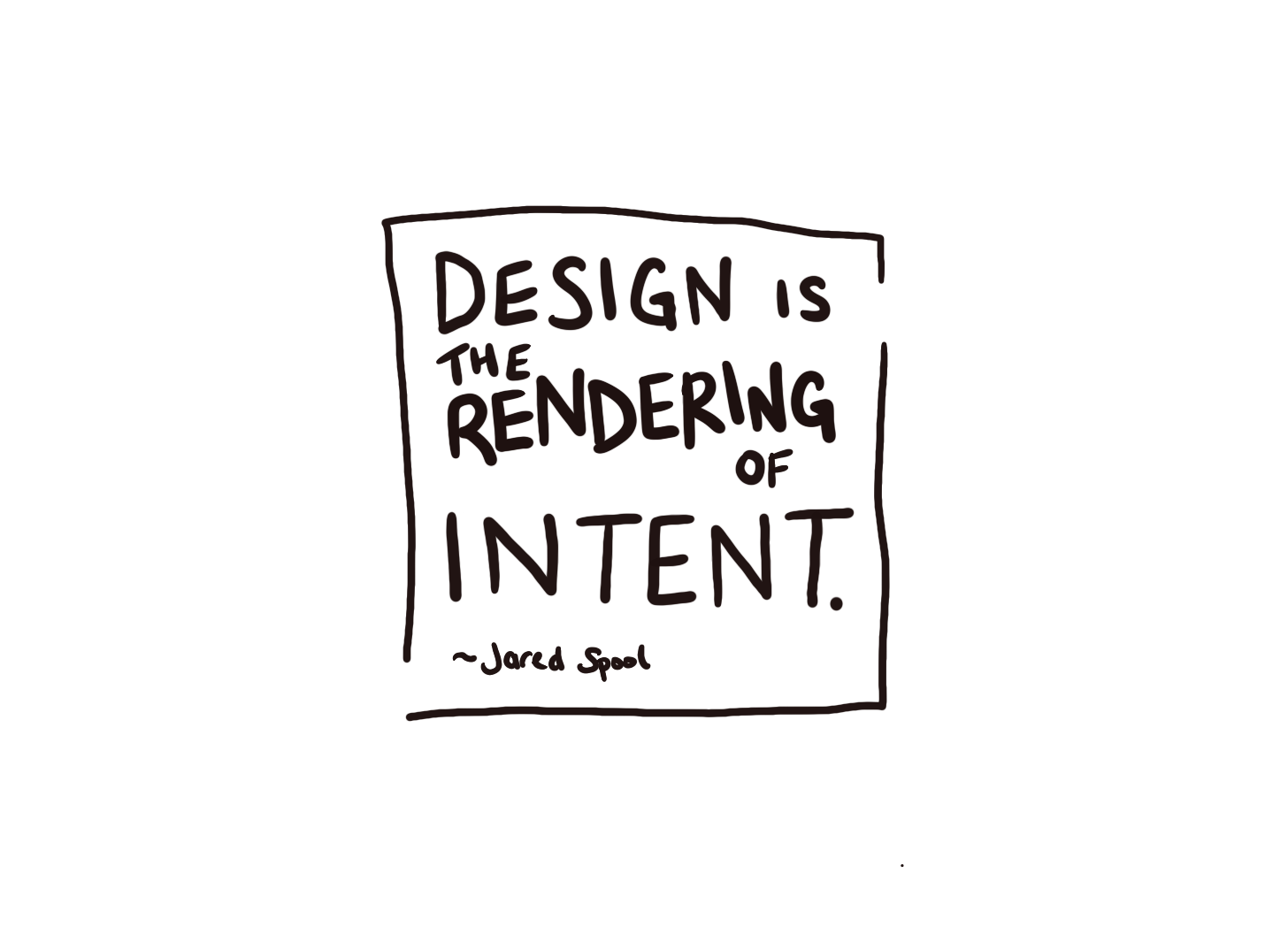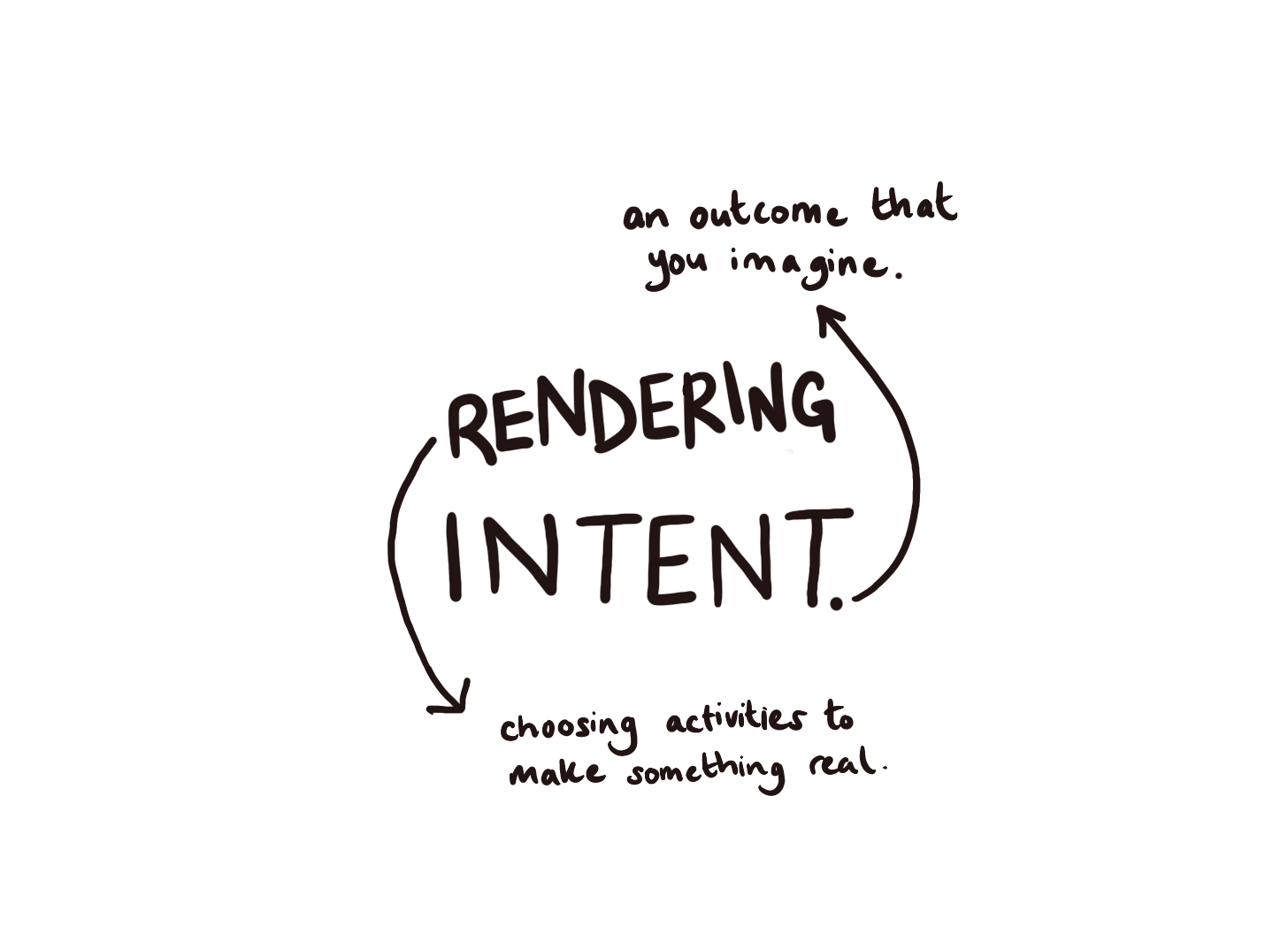Unpacking and Unpicking... Design
Design might seem like something for products, objects, and websites. It turns out it's for you and me, too.
What is design?
A lot of definitions of design focus on the look and function of a product - a chair, a car, a wardrobe, a building. Maybe design seems relevant to the products and things we use in our day to day lives - but not to ourselves. I disagree. My understanding of design is centred around this statement:
Design is the rendering of intent.
There’s a lot of choices that designers make, and those have consequences: this is what Jared Spool is getting at in his definition. The full version:
"Design is the rendering of intent. What we intentionally design can delight someone. It can also frustrate them. We can change our rendering, with the intention to create more delight & less frustration. When we do that, we're designing the user's experience."
This definition of design applies to your smartphone, a supermarket layout, and an app for repeat prescriptions. These can be designed so that they delight or frustrate the people who use them – me, or you! Jared Spool’s definition presents this as the choice of the designer working on them.
// Reference: Read more from Jared Spool on his definition of design
But wait, design is so much more than the objects and services we use.
Design is more than chairs, phones, supermarkets, apps and websites.
It’s a set of tools, and a process that helps us to find path through those tools and the insights they bring us.
We can use design in our lives so that life delights us or frustrates us, too. We can choose an intent and render it (make it happen).
Spool uses two key words in his definition:
Intent - An imagined outcome.
Render - The activities chosen to make that outcome real.
Imagine an outcome, and choose the steps to make it real in the world.
An intent is a clear, imagined, desired outcome. Even if you’re thinking, Lou, I don’t want to plan my life, I want to wing it and be spontaneous. That’s great! That’s your intent! “My intent is to be spontaneous.” To live a spontaneous life.
Whatever your intent, it’s guiding your actions and your decisions. Even if you don’t know what it is yet, if you’re not aware of it. It’s there, beneath the surface, having an influence.
Using design in our lives means living life on purpose, with a clear purpose - or at least a commitment to explore what that purpose might be. And to get more clarity on it over time. It’s not a final answer.
Recap - Applying design tools and processes to our lives means:
Being specific about how we want to approach life, not sleepwalking through life and then wondering where the time went.
Taking an approach or framework that helps us to learn by doing, not generating loads of ideas or talking about possibilities without taking any action.
Applying our intent throughout our lives in multiple different ways, learning from each go around, not designing a life on paper and sticking to that version no matter what.
Knowing an intent when you see one
Key criteria
It’s clear to you.
It sounds like an action. It describes something you do, and try to do.
It’s general rather than specific. This is not a SMART goal or objective. It’s broad, a sense of direction. Something that can be applied and interpreted in different ways, and in different fields.
It’s aspirational. It’s something you want to explore and keep playing with ways of making it real. It’s not something you feel you have already got the hang of.
Real examples
Growing our lives.
Making sense.
Making rainbows.
These are mine. Yes, I have three, haha! But I don’t really see them as three separate intents. I see them as the same intent, articulated in three different ways. Maybe one day I’ll have found a way to articulate my intent in one single phrase. But for now, these three ways of articulating my intent are serving me.
This is design in action! My three intents are three ‘iterations’. Growing our lives was the earliest iteration. The others came later. Iterations are really important to the design approach, as we’ll see. More on that, later!
Uncovering your intent
There are some useful steps you can take to uncover your intent. I’ll share those in a dedicated post. Watch out for the follow up!






Hi Lou, great post - love your illustrations. Interesting as I run similar coaching design your creative life & biz